Photo by South Kesteven District Council
Berms
What are Berms?

Introduction of berms in a restoration project along Scopwick Beck, Lincolnshire, conducted by Lincolnshire Rivers Trust.
Berms are low level shelves constructed in a river channel to reinstate the natural sinuosity of the river and create a low inset floodplain.
Wooden stakes are driven into the river bed next to the river edge, with brushwood bundles called faggots in between the posts. This forms the toe of the berm, which is then backfilled with materials like soil or brushwood in order to trap fine sediment that is transported by the river.
These berms can then be planted, using plugs or pre planted coir pallets, to make them more stable and introduce more native floral species. The success of planted berms rely on the establishment of the plants and their root systems to ensure their stability in the channel.
The Benefits of Berm Creation
Berms are very beneficial as they re-meander the river, reinstate more natural processes, create more habitat for freshwater species, and help create a new lower level floodplain.
The berms will cause the river channel to narrow in lower flows, increasing the rate of flow and creating scour. This scour is essential as it creates variation, creating a diverse habitat for a wide range of species.
The height of berms is set at summer water levels so they are drowned out in higher flows, and do not cause the backing up of water which reduces flood risk.
One species berms benefit is fish species, particularly salmonid species, which benefit from reduced silt quantities on the river bed.
This is because the presence of fine sediment affects the survival of their eggs. The fine sediment blocks the spaces between the gravels fish use to create their 'nests' (known as a redd), reducing the water flow through the redd, and therefore limiting the amount of oxygen available to the undeveloped eggs.
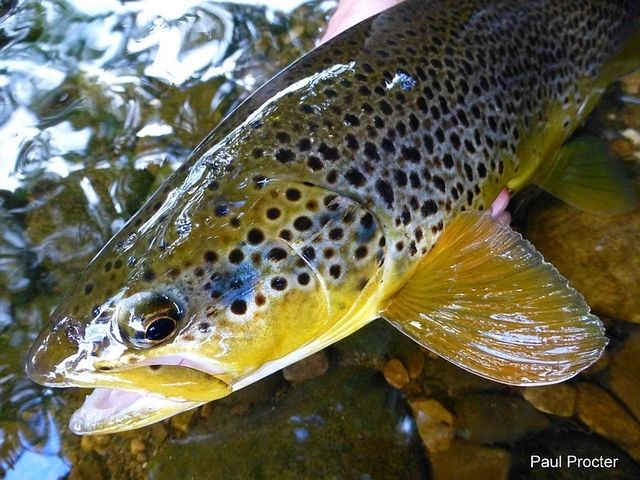
Brown Trout, a native salmonid species, found in the British Isles.
Hinging
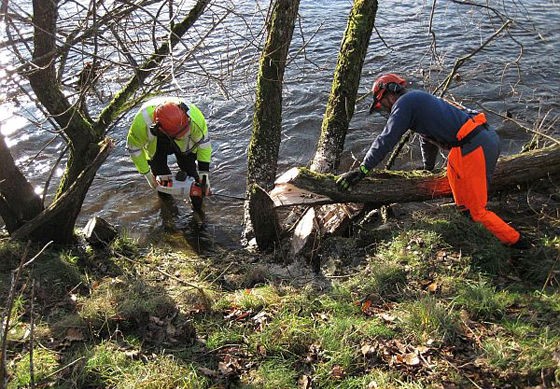
Wild Trout Trust conservation officers hinging trees into the river, providing habitat and refuge for in-channel species.
The placement of berms are carefully identified to create a more sinuous channel. However, trees can be hinged to create the toe of berms, adding the benefits of introducing woody material to the river. In this case the placement of berms will be dependent on the location of the trees suitable for hinging.
Introducing woody material into the river appropriately creates the perfect habitat for in-channel species such as invertebrates and fish species by providing refuge from faster flows and predators.
Hinging trees into the river involves cutting the tree halfway through in order for the tree to bend over and fall into the river, while still being partially attached at the base. The tree will divert flow away from the bank, protecting it from erosion, but will not block the channel as they are secured low and parallel with the bank.
This also helps us to manage trees better by retaining the habitat value of trees that may otherwise have to be removed as they grow out into the middle of the channel.
Trees can also be hinged parallel to the bank, forming the toe of berms, which are then secured using wooden stakes.
Berm Creation Example - River Slea, Sleaford
Berms can be created along various river channels, to create a more sinuous channel, improve habitat and create a more aesthetic area for the public. Commonly, berms are introduced where the river channel has two confining banks.
The Lincolnshire Rivers Trust have implemented many successful river restoration projects along Lincolnshire's waterways. One of these was conducted along the River Slea, where pools were excavated and berms were created. This created variation in the channel, with depth variations and berms introducing roughness. 300 plug plants were then planted to establish the berms, narrowing the channel to speed up flow and maintain the pools created.

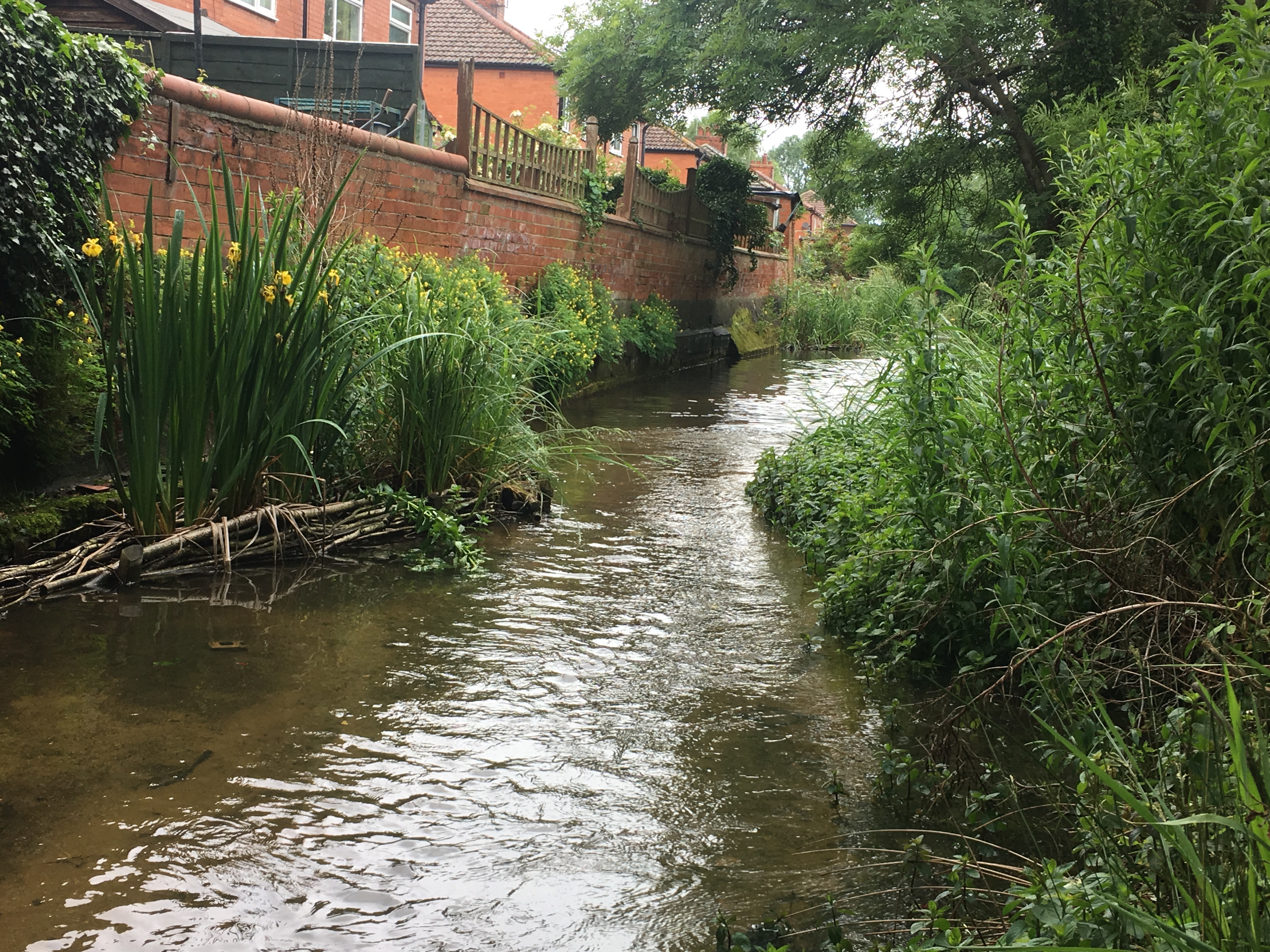
Before (left) and after (right) a restoration project, involving the creation of berms, was implemented along the River Slea, Sleaford.
Tree Hinging Examples
In September 2020, exciting restoration works were undertaken by Lincolnshire Rivers Trust and Lions Environmental Contractors to improve the section of the River Witham along Dysart Park, Grantham.
In order to create the best habitat for local wildlife, small trees were hinged into the river to create berms, increasing light and introducing woody material to the river.
The many benefits of creating these berms include providing refuge for fish and invertebrates as well as introducing natural variation in the river to speed up water in some areas, creating riffles.
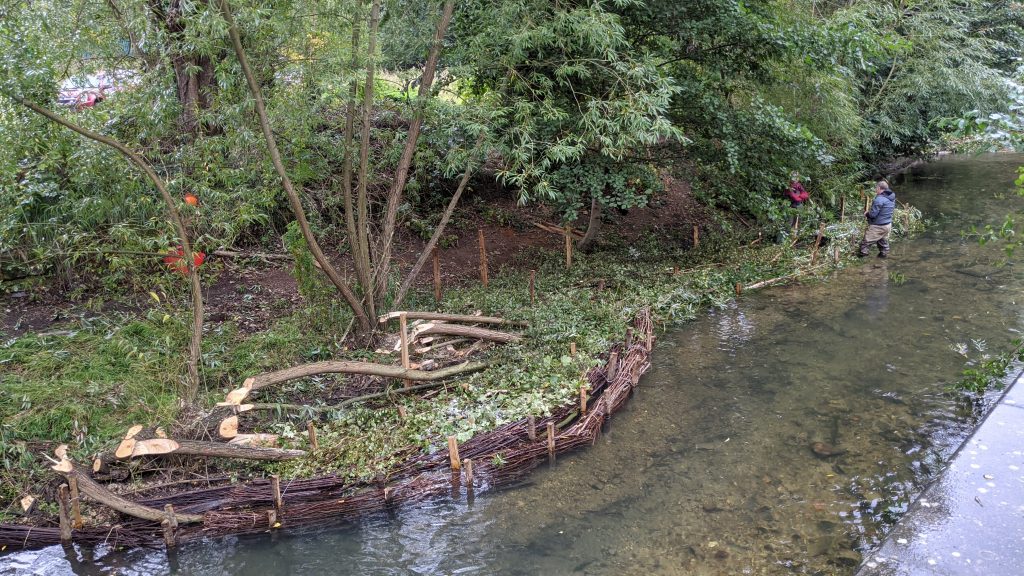
Berm creation along the River Witham at Dysart Park, Gantham
Along the Lower River Witham, in 2016, the Environment Agency introduced a tree management scheme to hinge trees into the channel in order to improve habitat for fish and other species in the river.
The Lower Witham was chosen because it has an especially high lack of habitat diversity caused by the historic straightening of the channel.
By hinging riverside trees into the channel fish are able to shelter in pools created from scouring and woody material along the river banks.
For more examples of berms and hinging project visit our other projects page.
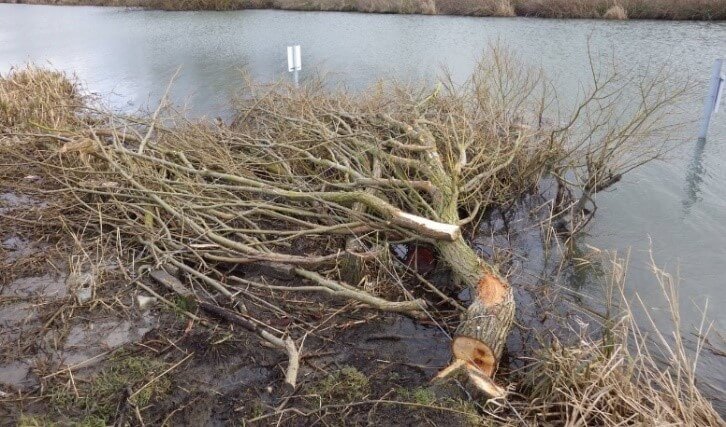
Tree Hinging along the lower Witham to provide refuge for fish and increase habitat diversity.






